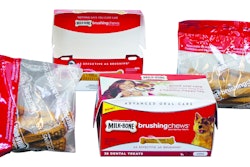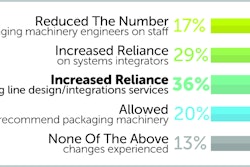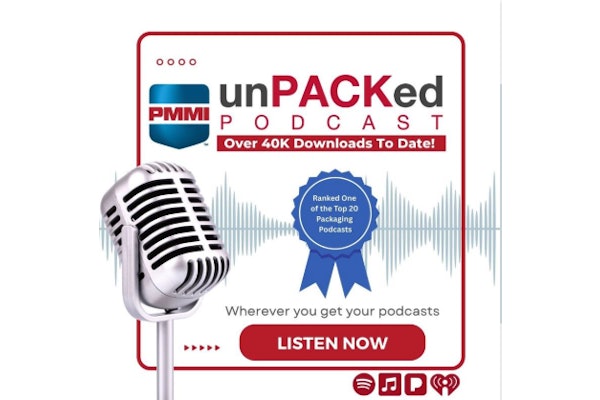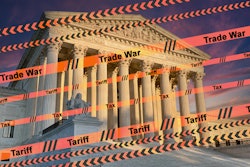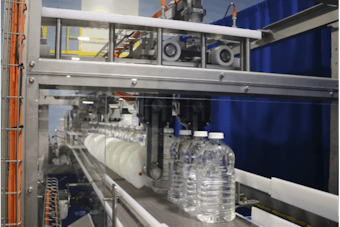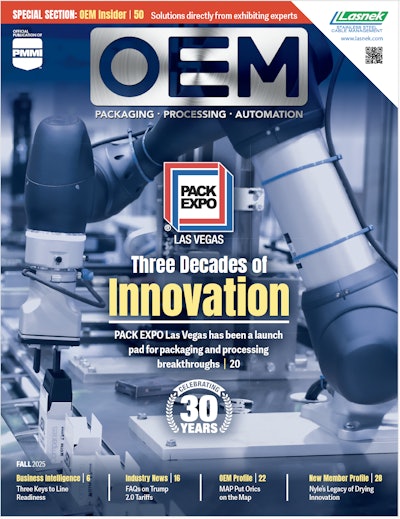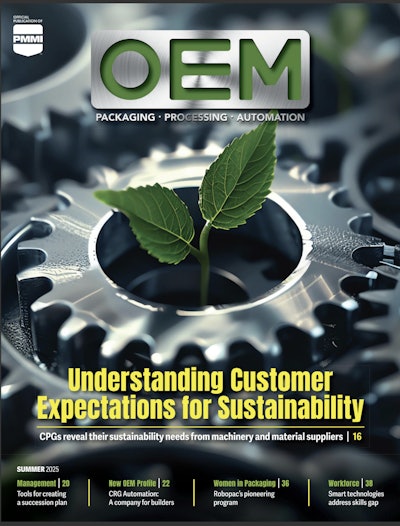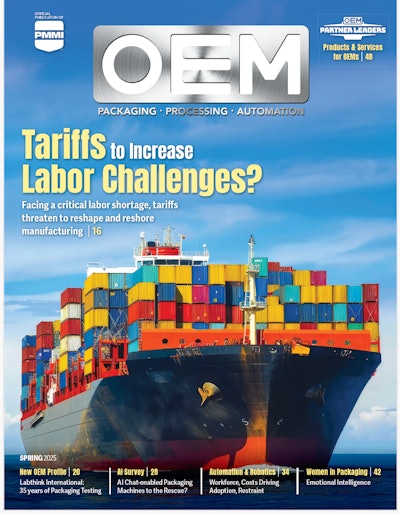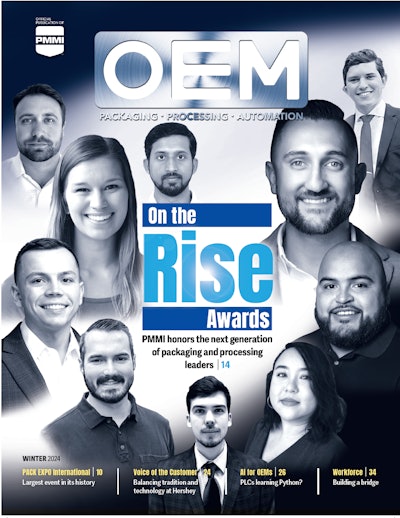The world is shrinking. Political or ecological events in Asia affect North America just as an economic crisis in Europe trickles down to South America.
Despite evidence that a global economy is drawing near, the majority of packaging and processing OEMs in North America set their business sights no further than their own backyard.
Germany, Italy and China export significantly more packaging machinery than the U.S. while the Netherlands replaced China in keeping the U.S. fourth and out of the medals in processing machinery exports. The global demand for packaging machinery for food, beverages, pharmaceutical, hygiene and chemical products should exceed $50 billion by 2022 and 84 percent of the global packaging machinery market is located outside of the U.S.
Why aren’t OEMs going after a piece of a constantly growing pie?
Free your mind
The typical anecdotal reason OEMs give on why they don’t export is “it’s hard.” Gone are the days of that being an excuse, says Consolium VP Ed Marsh. “That used to be [a] plausible [defense]— finding buyers was a big challenge,” the global business advisor says. “But over the past few years that has completely shifted. Regardless of where buyers are, the internet is their primary tool.”
So much so that he cites 93 percent of B2B purchases start with a simple Internet search and 74 percent of B2B buyers ultimately select the vendor that first provided value when a search began.
Buyers are clearly available, why does the U.S. still lag behind its foreign competitors in the export game?
“The primary impediment has been and will continue to be mindset, “ Marsh says. “These deals do take a bit longer and there are transactional impediments that tend to freak U.S. sellers out—payment processing, foreign currency, credit risk, logistics, etc. There are more emails back and forth (and not enough phone calls). There are misunderstandings and frustrations.”
North American OEMs see exporting as a daunting task, but at its core, maybe the idea itself is what proves most intimidating. Polypack, Inc. wrappers are in factories and plants throughout Latin America, Europe and Asia and Emmanuel Cerf, VP of sales and marketing, sums up the ins and outs of exporting quite succinctly.
“Sell what customers in that country need, build it to their specs and service it locally,” Cerf says.
The constantly evolving global market can actually an advantage for OEMs. Cerf believes exporting to different continents brings stability to Polypack, serving as a balance when different markets go up and down.
“A company is generally healthier, more profitable and resilient when they export,” says Marsh. “If you cast your net to include a vastly larger world of buyers, you’ll have enough when orders slow down. Companies that focus just on the U.S. are more susceptible to feast/famine cycles.”
Justin Kirkpatrick, director of export sales and director of marketing for Econocorp, Inc. simplifies his company’s export agenda to the fact that the research and development of new machines is already in hand. For the cost of the material to build additional machines off of these developments, exporting can add a good margin for profit.
According to Cerf, exporting also aids R&D. “Selling in different markets also helps with the innovation of our product line, as packaging challenges vary from country to country,” he says.
Fear of commitment?
Building an international business takes considerable planning, time and resource commitment from senior management. After the decision to export has been made, it must be fully supported or overseas ventures will die on the vine. Lack of planning and lack of commitment to a market are the biggest threats to success abroad. Having a senior level employee, or better yet, a department, devoted to exporting with the appropriate skills sets, language abilities and desire to travel in order to develop channel partners and customers is a fundamental requirement.
Kirkpatrick knows first-hand that overseas business does not fall into your lap. “You must be ready to jump through hoops and decide ‘we ARE going to do this,’ and then do it,” he says.
He believes a company should have at least one employee who is fully dedicated to the export market and is willing to put in the time and effort physically go overseas to build and maintain relationships.
“When there is a giant body of water separating the two of you, it’s much easier for them to forget about you if you aren’t making the effort to show up once in a while,” he says.
Kirkpatrick thinks it’s all the details—big and small— that make it easy to say “forget it” once an OEM looks at the exporting arena. Companies need to be prepared to deal with language and custom barriers, but also prepared for the smaller details, like supplying parts in metric world. “The ways of doing business in every country vary so drastically, that what might be acceptable in one market could be totally inappropriate in another,” he said.
Jorge Izquierdo travels the world as vice president of market development for PMMI. Not having a defined export strategy and a lack of management commitment are the two biggest obstacles he sees from companies that attempt exporting and fail. Another often overlooked factor, in his opinion, is a lack of flexibility in regard to different markets.
“An export model that works in South America will be much different than an export model that works in a European country,” Izquierdo says. “Not conducting thorough market research and entering too many markets too quickly, with the same export model is a recipe for failure.”
The big three
Effective machinery exporters agree on three specific necessities for success. The first is identifying proper representation.
“You need people who know the industry, have contacts, and will focus on your products enough to make it worthwhile,” says Jim Hawley, director, International Business Development, Automated Packaging Systems, Inc. “This is the big challenge. We turn over 10 to 20 percent of our distributors every four to five years in some markets because they aren’t doing the job.”
Sometimes the first distributor a company contacts or begins doing business with will not work out, but that is the nature of beginning an export operation, according to Cerf. “In some areas it’s trial and error and in others good, established distributors will already be selling complementing lines of equipment,” he says.
The second step to success is after-sale service. Some companies train local distributors; others depend on local knowledge. Either option is viable, but Cerf and Marsh cite lack of service, as perhaps the biggest obstacle to successful exporting.
“Just like finding buyers, after-sale parts and service is less of an issue than in the past,” Marsh says. “Machines are more reliable (including self and remote diagnostics), video for remote troubleshooting is easy, and consumables are more consistent.”
He feels its still high on the list of questions buyers ask, but they tend to buy the machine they think is best then learn to support it, rather than vice versa. “It’s often a factor, not THE factor,” he says. “And with international shipping, parts are available anywhere in the world in two days, in most cases.”
The third factor driving overseas partnerships falls under the umbrella of logistics. It includes everything from aforementioned language barriers to the ever-changing exchange rates.
Cerf views global exchange rates as mostly an issue for small-scale projects due to the specific nature, and high price points, of larger machinery. “Exchange rates are an issue for smaller capital investments. Decisions made on larger equipment are often on a technical, not financial, basis,” he says.
Hawley feels it is not as big an issue as it may seem. “Everyone is in the same boat competitively unless they are making machines locally and billing in local currency, which most are not,” he says.
Econocorp devised a unique solution to deal with fluctuating currency rates. Kirkpatrick suggests creating a set exchange rate with customers that values the Euro (or other currency) slightly higher than where it currently sits. “Yes, you are offering a temporary discount on your machinery, but without just flatly giving them an extra percent that they would expect to maintain in the future,” Kirkpatrick says. “When that particular currency recovers, using your exchange rate would no longer be advantageous to them, and the normal rate would apply.”
As for the other facets of organizing an exporting operation, resources are available from the government and PMMI. Opinions on the effectiveness of these tools vary.
American companies are behind the eight ball if you ask Cerf, citing the lack of sufficient government incentive. There are a few thousand dollars from organizations like PMMI and perhaps a thousand more from local government, but European manufacturers have a significant advantage as far as financial help is concerned, he says.
Hawley echoes Cerf’s sentiments, but finds value in PMMI programs and fellow members.
“Members looking to get into international sales can learn from PMMI members who have done it,” he says. “The PMMI pavilions at international shows have helped us as well.”
Marsh agrees to a point, acknowledging that often the tools and resources available tend to be fragmented and overlap. That being said, many exporters do not realize that they are eligible to take advantage of significant tax benefits established by the U.S. government to encourage export activity and growth for small and medium sized companies.
Any undertaking that is worthwhile is going to be challenging if the goal is to do it right. Exporting packaging and processing machinery is no exception. OEMs are cheating themselves, and their bottom line, however if they do not at least investigate opportunities outside North America.
“For companies that want to grow, the effective, basic steps are destination agnostic,” Marsh says. “That means that doing it right simultaneously grows domestic and international sales.
“It’s no longer primarily about finding buyers— it’s about helping them find you, educating them and guiding them through their buying process.”




